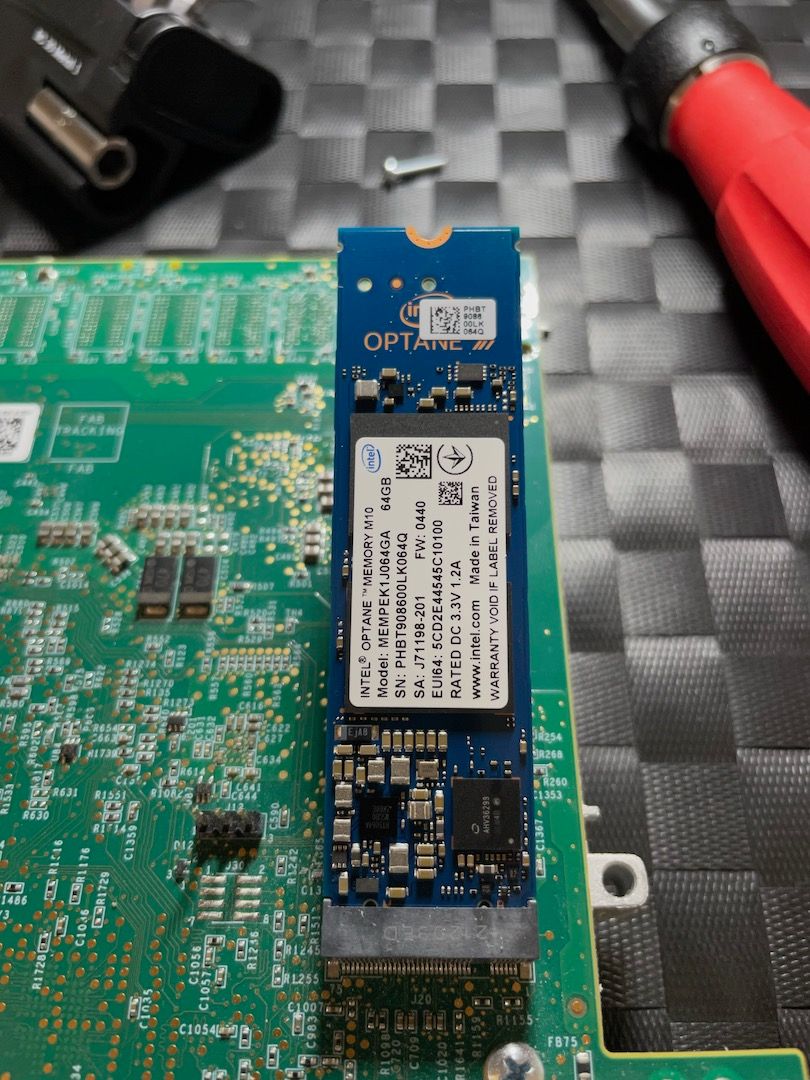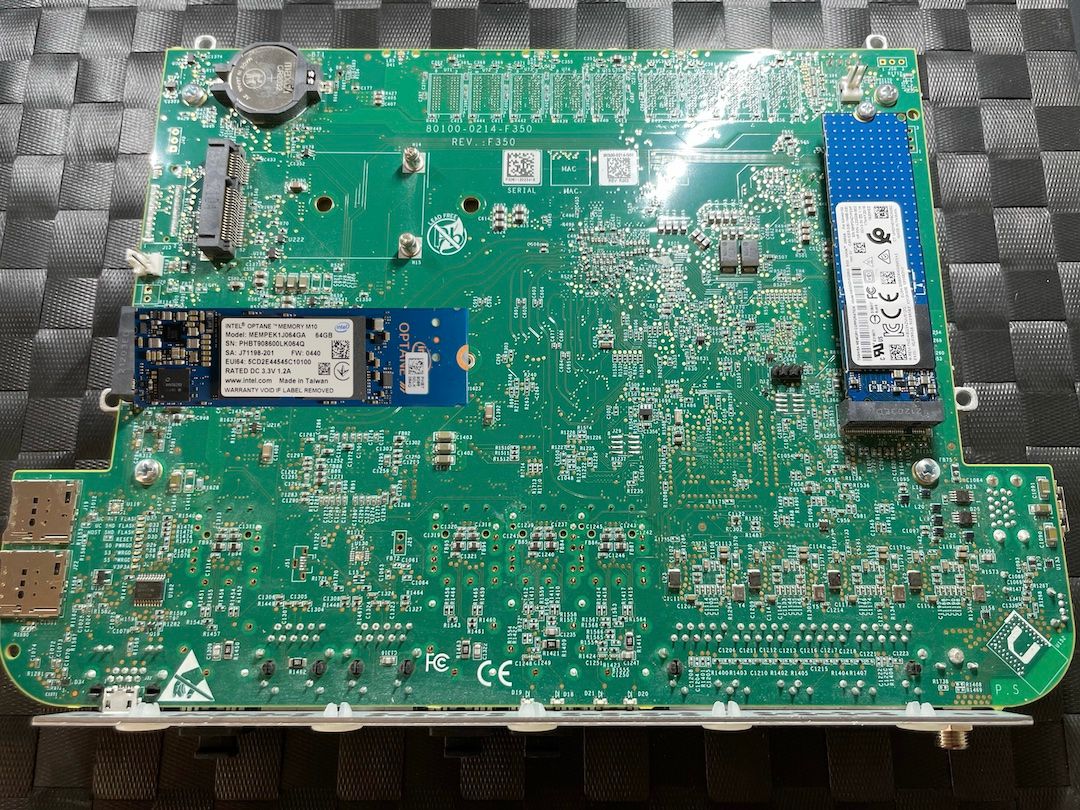Netgate 6100 SSDs
-
@cdturri said in Netgate 6100 SSDs:
"There really isn't a good reason to use anything larger in pfSense." => Where have I seen this before? Ah yes, Gates' "640K ought to be enough for anybody" famous quote.
Ha, well that's always possible. However there isn't a limit I'm aware of so should you discover something that needs TBs of storage on your firewall you could, in theory, add it.
Logging is not one of those things though. 100GB of logs stored on pfSense is next to useless. If you need that sort of long term log storage it should be exported to a syslog server where it can be usefully viewed and analyzed.
You can see in my test mirror setup I have two 16GB drives and I'm using 6% of that.And, yes, the slots are also B keyed because they are wired for USB with the SIM slots.
Steve
-
@stephenw10 said in Netgate 6100 SSDs:
Logging is not one of those things though. 100GB of logs stored on pfSense is next to useless. If you need that sort of long term log storage it should be exported to a syslog server where it can be usefully viewed and analyzed.
I certainly agreed on that. I don't intend to use the Netgate as reporting solution but I do prefer to keep the original logs in situ so that I can choose whichever analysis solution I may want to use. Export to a syslog server it's possible but not all packages use syslog and this adds a potential failure point. Often I find that I need to go back and analise what happened in a period of time on my network. Without the logs I can't do that hence why I want to be sure I can keep the original logs. Thanks for all the replies, very helpful!
-
@rcoleman-netgate said in Netgate 6100 SSDs:
@cdturri said in Netgate 6100 SSDs:
Still I think that adding SSDs to the 6100 should not void the warranty
I stand by my statement of the boards are so tightly placed that if you are not careful you can break the plastic and the PCB. Colleagues broke the plastic covers on test units and I think we've seen at least one repair claim on a broken PCB from someone that tried to upgrade their storage.
Proceed at your own risk, of course, but we aren't going to endorse the practice for this specific reason and we do not publish a list of "compatible drives".
Not to belabour the point but Tom Lawrence opens a 6100 up in his review and suggests it’s quite easy to do. He does say that there’s only one serviceable part (the battery) while also saying that we gotta wait for official Netgate support for internal peripherals. Given the limited lifespan of the internal eMMC on the base units I’m surprised there isn’t official support for adding an after-market SSD even though it is probably technically possible.
I think if care is taken when removing the case, it should not be a problem but point taken about voiding warranties, etc.
-
@stephenw10 True that, but for me it’s not about the space. It’s about the endurance of the storage.
I found it very easy to install my own SSD in my SG-6100, and I choose a 512Gb size based on endurance only.
This allows me to log everything I want and have Suricata, pfBlocker and NtopNG do their thing with proper logging without worrying that it will kill my storage.
My calculations said the eMMC would be dead in about 8-10 months with my current load - With the SSD, it says about 10 years. -
@keyser I opened my 6100 after the warranty was over and my 6100 failed to recognize the internal drive (probably due to over exiting logs). Since the cooling block is glued to some of the components, I rather do not take that off, is there any of the M2 slots usable for an SSD? I see three slots, two of them NVM and one that looks like a PC-Express Slot. The two NVMs slots are just "B-Keyed" not "B+M" as suggested here. How did you exchange your SSD?
-
@muenchris I just saw this Video on Youtube about how the MAX was equiped on the inside (and a guide in disassembling it).
https://www.youtube.com/watch?v=Twp07m-SvV4
-
@keyser said in Netgate 6100 SSDs:
https://www.youtube.com/watch?v=Twp07m-SvV4
Thanks, in my 6100 all slots are empty. But I got confirmation I can use any of the two NVME slots to add a new drive. Opening the 6100 is actually very easy if you have the right torx screwdriver.
-
You can use either m.2 slot. Or both. The slots are B-keyed, yes, but since all NVMe drives are M-keyed you need one that's B and M keyed to fit. Or at least I've never seen a B only keyed NVMe drive. If one exists that would probably also work.
Steve
-
Thanks, in my 6100 all slots are empty. But I got confirmation I can use any of the two NVME slots to add a new drive. Opening the 6100 is actually very easy if you have the right torx screwdriver.
If all your slots are empty it’s because you did not buy the MAX model (just like me). So what you have worn out is the built in 16Gb eMMC. Good thing you can install a SSD, otherwise the box would be useless.
-
@keyser Yes that is what Netgate support told me, too.
-
@muenchris Well, I got my drive and put it in one of the eNVM slots, but during the install the drive is not recognized.
Is there any way to "mount" or format the drive for use by the pfsense installer? (Sorry I am a windows guy and linux is not my expertise) -
The installer will partition and format the drive you don't normally need to do anything to prepare it.
Do you see it detected in the boot log?
Like:
nvme0: Allocated 16MB host memory buffer nvd0: <M.2 (P80) 3TE6> NVMe namespace nvd0: 114473MB (234441648 512 byte sectors) -
@stephenw10 Not that text. I see "NVME Lens loading/installing" but not any other entries
-
@muenchris Weird. I would check the install again, or perhaps try the other keyed slot for Storage - Just to to rule out a misalignment/contact issue. If that doesn’t work either, it’s probably the SSD….
-
In case of any doubt, the slot you should be using on the 6100:

 ️
️ -
You should be able to use either m.2 slot on the 6100 (or both) it will boot from either.
-
@stephenw10
Good to know.
Zero effort/skill demo:

I'm available for all the photoshop skills you don't need.
 ️
️ -
@RobbieTT I tried two different SSDs one 64GB one 128GB from different vendors. Both did not work in bothe slots - not showing in bootlog or installer as an option.
The Optane from intel is discontinued. Are there other SSDs recommended?
I tried this one: https://www.amazon.com/TEAMGROUP-512GB-Solid-State-Drive/dp/B07H21182F/ref=sr_1_5?crid=1DQADOIVOQMFR&keywords=ssd+b-keyd&qid=1692475071&sprefix=ssd+b-key%2Caps%2C362&sr=8-5
and this one: https://www.amazon.com/Kingdata-M-2-2242-64GB-High-Performance/dp/B08J2P4FR5/ref=sr_1_1_sspa?crid=1DQADOIVOQMFR&keywords=ssd+b-keyd&qid=1692475124&sprefix=ssd+b-key%2Caps%2C362&sr=8-1-spons&sp_csd=d2lkZ2V0TmFtZT1zcF9hdGY&psc=1
I cannot find a B-Keyed one, one B+M as recommended above, but I wonder if anyone has experience with a drive other than the Optane?
-
Since my internal drive of the 6100 is dead I am using a USB Boot Image that netgate gave me. It is possible that my drive does not initialize correctly with that USB Boot disk. The image I am using is pfSense-plus-memstick-serial-23.05.1-RELEASE-amd64.img.gz.
Maybe I have to format/partition the SSD manually before it can be used, but how would I go about this?
-
@muenchris
Lots of drives work and those of us on this forum that use Optane is probably less than 5.If you look at my photoshop pic you can see a non-Optane drive actually fitted from when I was testing different SSDs.
As long as the NVMe drive is keyed correctly it should work. The manufacturer recommends drives at 256 GB and below but I have personally tested 500 GB drives and they worked just fine.
I've tested WDs, Toshiba and Innodisk too, all with zero issues. My preference is for a DRAM-less drive, given the role of the device.